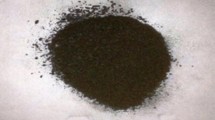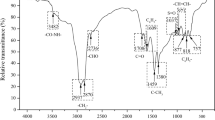Abstract
This investigation pertains to the bitumen production using component blending. During the manufacture of blended bitumen, the proportion of the constituents, the temperature during blending, and the duration of blending are selected to meet the penetration at 25°C and the absolute viscosity at 60°C as per the Indian specifications. The choices of the blend parameters become challenging when the constituents from multiple crudes are blended to produce different paving grades. Two constituent and three constituent blends for four different grades of bitumen were prepared in a laboratory blending facility from four different crude sources. A design of experiments framework was used to develop prediction models for penetration and viscosity. Simulations were carried out to suggest blending schemes to manufacture all the viscosity grades from different crude sources. Correspondence between the viscosity grade and high-temperature performance grade was observed for blend parameters for the crude sources investigated in this study.






Similar content being viewed by others
References
Reashma P S, Nivitha M R, Veeraragavan A and Krishnan J M 2017 Development of Unmodified Binder Specifications for India. J. Assoc. Asph. Paving Technol. 83: 653–669
Reashma P S, Nivitha M R, Veeraragavan A, Sikdar P K and Krishnan J M 2017 Development of Unmodified Binder Specifications for India. Transp. Dev. Econ. 3 (2): 12. https://doi.org/10.1007/s40890-017-0041-1
IS 73 2013 Standard specifications for paving bitumen. Fourth revision. Bureau of Indian standards, New Delhi, India
Singh H and Jain P K 1997 Bitumen quality and manufacturing processes-past and present technological status. Indian J. Chem. Technol. 4: 259–276
Rajan N K, Selvavathi V, Sairam B and Krishnan J M 2008 Rheological characterization of blended paving asphalt. Road Mater. Pavement Des. 9: 67–86
Corbett L W 1984 Refinery processing of asphalt cement. Transp. Res. Rec. 999: 1–6
Lopatskii A Y 1966 Graphical-analytical method of determining the softening point of bitumen mixtures. Chem. Technol. Fuels Oils 2: 802–804
Gun R B and Biryulina T G 1969 Compounded road asphalts. Chem. Technol. Fuels Oils 5: 707–711
Lopatinskii V A and Lopatinskii A Y 1970 Nomogram for determining softening temperatures of asphalt blends. Chem. Technol. Fuels Oils 6: 953–954
Akhmetova R S and Glozman E P 1974 Methods of selecting raw material composition for asphalt production. Chem. Technol. Fuels Oils 10: 619–622
Tabolina L S, Posadov I A, Rozental D A and Vinogradov M V 1982 Dependence of asphalt softening point on its component composition. Chemi. Technol. Fuels Oils 18: 45–48
Ishai I and Tuffour Y A 1987 The use of propane-precipitated asphalt (PPA) in bituminous paving mixtures (with discussion). Assoc. Asph. Paving Technol. Proc. 56: 599–631
Ishai I 1995 Long-term laboratory and field behavior of PPA asphalt cement blends. J. Assoc. Asph. Paving Technol. 64: 306–339
Ishai I and Yuval R 2002 Reformulation of asphalt cements for paving. J. Transp. Eng. 128: 111– 122
Chaffin J M, Davison R R, Glover C J and Bullin J A 1995 Viscosity mixing rules for asphalt recycling. Transp. Res. Rec. 1507: 78–85
Soleymani H R, Bahia H U and Bergan A T 1999 Blending charts based on performance-graded asphalt binder specification. Transp. Res. Rec.. 1661: 7–14
Ermak A A, Tkachev S M, Khoroshko S I, Yakubyak V M, Kadunin V M and Trofimov S A 2005 Production of compounded asphalts of improved quality. Chem. Technol. Fuels Oils 41: 486–490
Pustynnikov A Y, Ryabov V G, Kalimullin D T, Nechaev A N and Treskov A Y 2006 Production of compounded asphalts of improved quality. Chem. Technol. Fuels Oils 42: 188–191
Centeno G, Sanchez-Reyna G, Ancheyta J, Muñoz J A D and Cardona N 2011 Testing various mixing rules for calculation of viscosity of petroleum blends. Fuel 90: 3561–3570
Chakkoth U, Ravindran P and Krishnan J M 2017 Influence of viscosities of PDA pitch and flux on blended bitumen viscosity. In: Airfield and highway pavements 2017, pp. 225–235
Anderson M J and Whitcomb P J 2002 Mixture DoE uncovers formulations quicker. Rubber Plastics News 21: 16–18
Bressi S, Pittet M, Dumont A G and Partl M N 2016 A frame-work for characterizing RAP clustering in asphalt concrete mixtures. Constr. Build. Mater. 106: 564–574
Chavez-Valencia L E, Manzano-Ramirez A, Luna-Barcenas G, and Alonso-Guzmán E 2005 Modelling of the performance of asphalt pavement using response surface methodology. Build. Environ. 40: 1140–1149
Hamzah M O, Golchin B, and Tye C T 2013 Determination of the optimum binder content of warm mix asphalt incorporating Rediset using response surface method. Constr. Build. Mater.. 47: 1328–1336
Varanda C, Portugal I, Ribeiro J, Silva A M S and Silva C M 2017 Optimization of bitumen formulations using mixture design of experiments (MDoE). Constr. Build. Mater. 156: 611–620
Rakow M S 2003 Petroleum oil refining. In: Fuels and lubricants handbook: technology, properties, performance, and testing. West Conshohocken, PA: ASTM International, pp. 3–30
ASTM 2015 Standard Test Method for Viscosity Determination of Asphalt at Elevated Temperatures Using a Rotational Viscometer. D4402 / D4402M-15. ASTM International, West Conshohocken, PA
IP 469 2001 Determination of saturated, aromatic and polar compounds in petroleum products by thin layer chromatography and flame ionization detection. Energy Institute (formerly Institute of Petroleum), London, UK
Design-Expert 11 2017 Minneapolis, MN, USA. Stat-Ease, Inc.
Myers R H, Montgomery D C and Anderson-Cook C M 2016 Response surface methodology: process and product optimization using designed experiments. Fourth Edition, USA: John Wiley and Sons, pp. 767–778
Jeirani Z, Jan B M, Ali B S, Noor I M, Hwa S C and Saphanuchart W 2012 The optimal mixture design of experiments: Alternative method in optimizing the aqueous phase composition of a microemulsion. Chemomet. Intell. Lab. Syst. 112: 1–7
Piepel G F, Szychowski J M and Loeppky J L 2002 Augmenting Scheffe’ linear mixture models with squared and/or crossproduct terms. J. Qual. Technol. 34: 297–314
Azharul Islam Md, Nikoloutsou Z, Sakkas V, Papatheodorou M and Albanis T 2010 Statistical optimisation by combination of response surface methodology and desirability function for removal of azo dye from aqueous solution. Int. J. Environ. Anal. Chem. 90: 497–509
Bahia H U and Anderson D A 1995 The new proposed rheological properties of asphalt binders: Why are they required and how do they compare to conventional properties. In: Physical properties of asphalt cement binders. ASTM Spec. Techn. Publ., 1241: 1–27
Oliver J, Christina C and Peter W 2008 The results of testing overseas bitumen. Technical Report AP-T110/08, Austroads, Sydney
ASTM 2016 Standard Test Method for Viscosity Determination of Asphalt at Elevated Temperatures Using a Rotational Viscometer. D6373-16. ASTM International, West Conshohocken, PA
Author information
Authors and Affiliations
Corresponding author
Rights and permissions
About this article
Cite this article
Chakkoth, U., Krishna, K.R., Ramkumar, M. et al. Component blending for bitumen production for Indian refineries. Sādhanā 45, 48 (2020). https://doi.org/10.1007/s12046-020-1268-9
Received:
Revised:
Accepted:
Published:
DOI: https://doi.org/10.1007/s12046-020-1268-9




